Since the end of World War II, the U.S.-Japan alliance has been the cornerstone of U.S. security interests in Asia. The two countries’ partnership remains fundamental to regional stability and prosperity.
Here is a brief timeline of U.S.-Japan diplomatic history and cooperation since the mid-20th century, with a focus on security issues.
1951-1952

Shortly after signing the San Francisco peace treaty on September 8, 1951, Japan’s Prime Minister Shigeru Yoshida signs the Security Treaty Between the United States and Japan. (© Getty Images)
Officials meet in San Francisco to sign the Treaty of Peace with Japan on September 8, 1951, formally ending World War II and the Allied occupation of Japan. When the treaty goes into effect on April 28, 1952, Japan is once again an independent state and an ally of the United States.
While signing the peace treaty, U.S. and Japanese officials also sign the Security Treaty Between the United States and Japan — a 10-year, renewable military agreement that outlines a security arrangement for Japan that accommodates its pacifist constitution.
1960
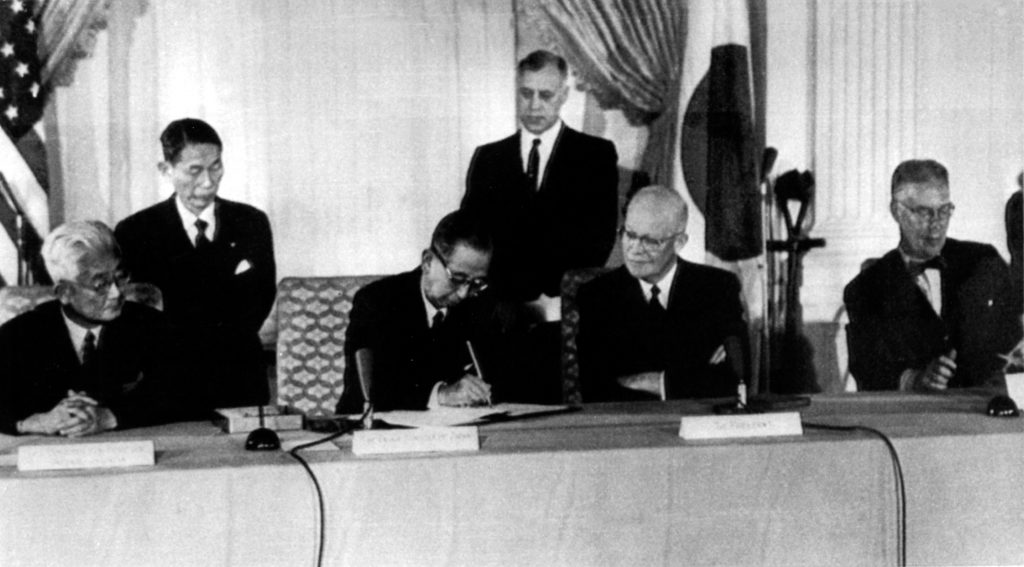
Japan’s Prime Minister Nobusuke Kishi signs the updated U.S.-Japan mutual security treaty on January 19, 1960, in Washington. Kishi, center left, sits beside President Dwight Eisenhower, center right. (© Robert M. Baer/AP Images)
Japan and the United States sign a new, revised Treaty of Mutual Cooperation and Security on January 19, 1960. Under the treaty, both parties agree to assist each other in case of armed attack on territories under Japanese administration (although Japan is constitutionally forbidden from resolving international disputes through military force). The treaty also includes provisions on further developing international and economic cooperation.
1969-1972
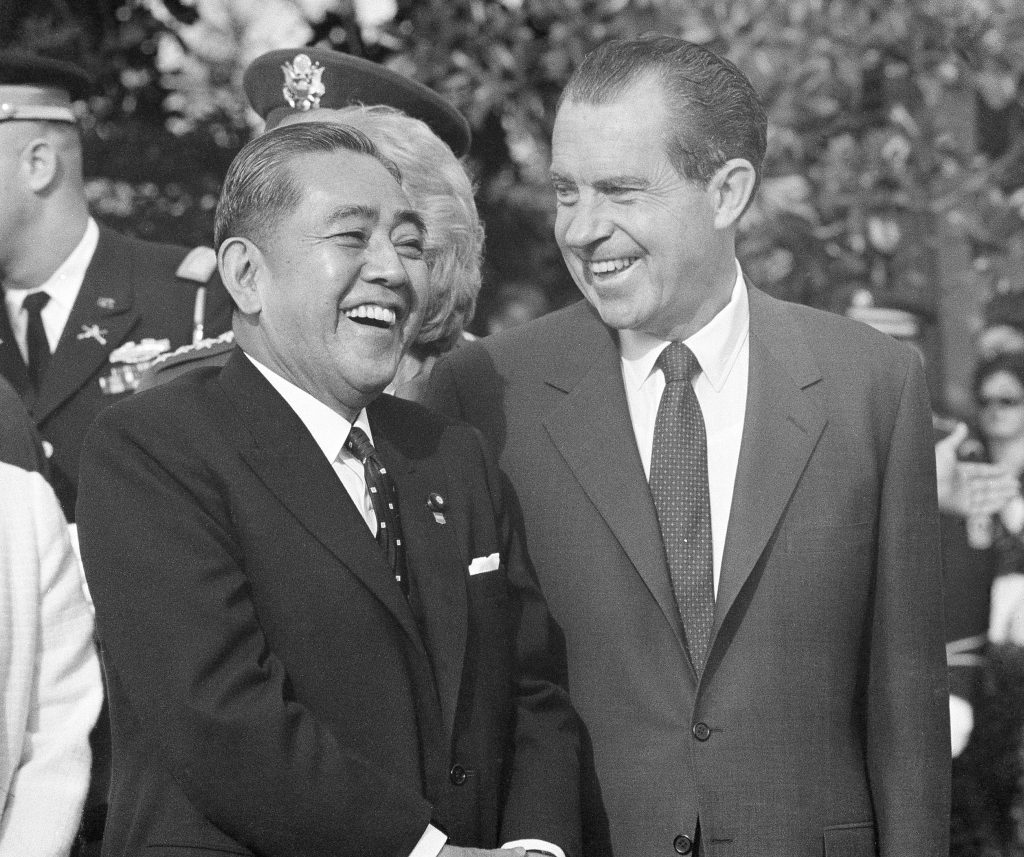
President Richard Nixon, right, welcomes Japanese Prime Minister Eisaku Sato to Washington on November 19, 1969. (© AP Images)
In November 1969, Japan’s Prime Minister Eisaku Sato visits Washington, where he and President Richard Nixon sign a joint communiqué announcing a U.S. agreement to return Okinawa — one of the Japanese territories acquired by the United States during wartime — to Japan in 1972. After 18 months of negotiations, the two countries sign an agreement in June 1971 with concrete provisions for the return.
1978-1981
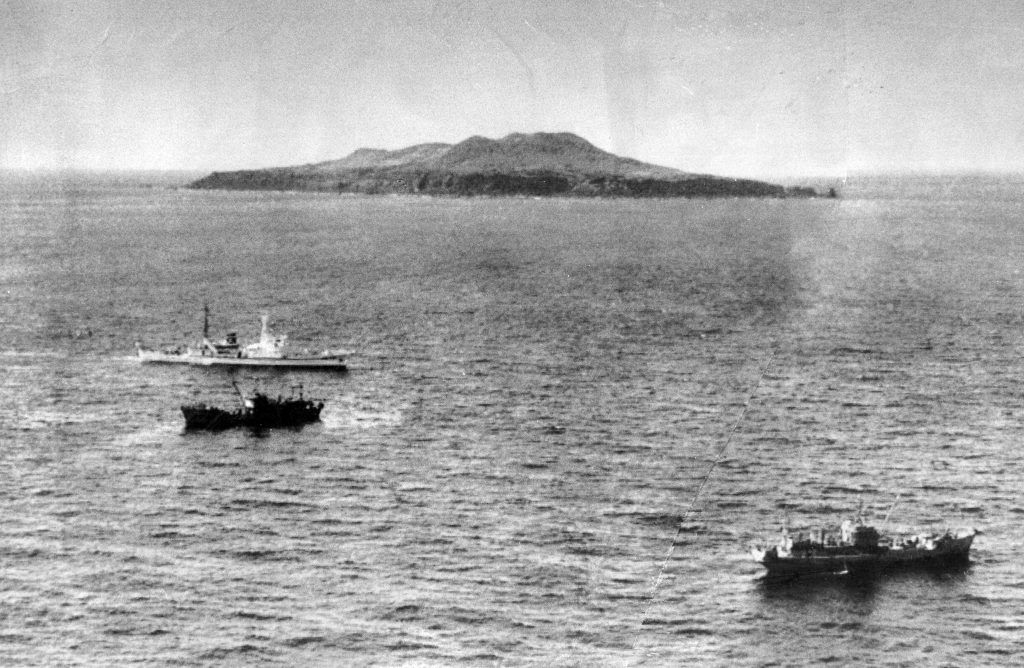
A Japan Coast Guard vessel patrols near Chinese fishing boats approaching Kubajima Island in the Senkakus, near Okinawa, Japan, April 1978. (© Asahi Shimbun/Getty Images)
Japan and the United States sign the Guidelines for Japan-U.S. Defense Cooperation, a framework outlining the roles of each country’s military for Japan’s defense (Japan maintains self-defense forces, refraining from military engagement abroad except for U.N. peacekeeping operations). Washington and Tokyo launch joint training and exercises.
Japan also accepts greater responsibility for the defense of seas around its shores, pledges greater support for U.S. forces in Japan, and boosts its self-defense capability.
1983-1987
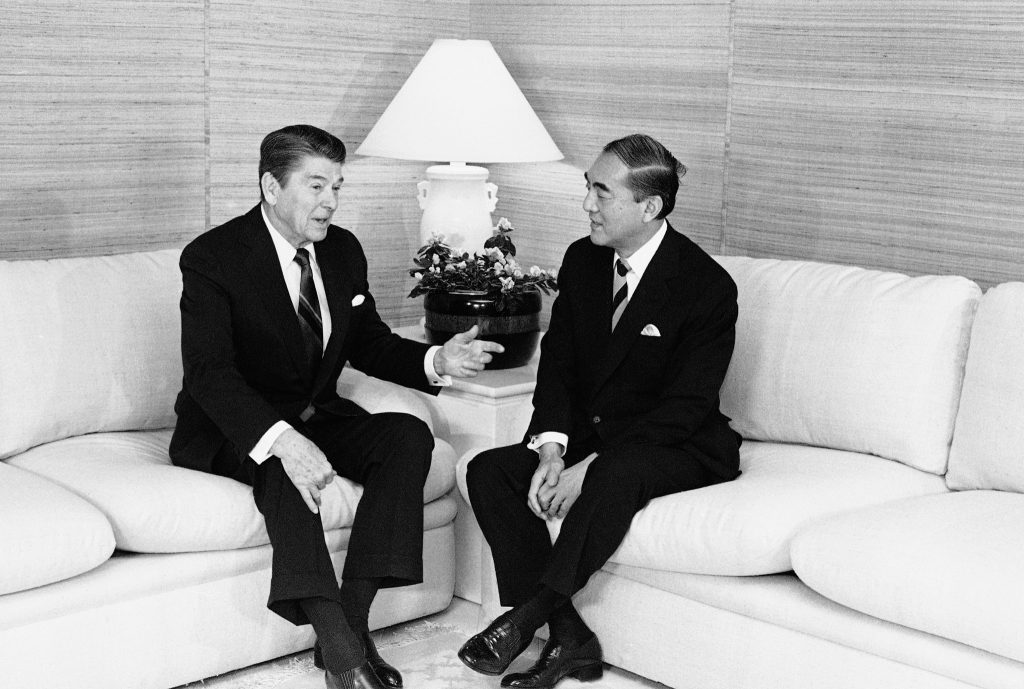
President Ronald Reagan chats with Japanese Prime Minister Yasuhiro Nakasone before the official start of their meeting in 1985. The two leaders met often over a span of several years to discuss issues such as nuclear energy and trade. (© Ira Schwartz/AP Images)
A U.S.-Japan working group produces the Reagan-Nakasone Joint Statement on Japan-United States Energy Cooperation in 1983. Bilateral energy relations are advanced further in 1987 by an agreement for cooperation concerning peaceful uses of nuclear energy.
2011-2018
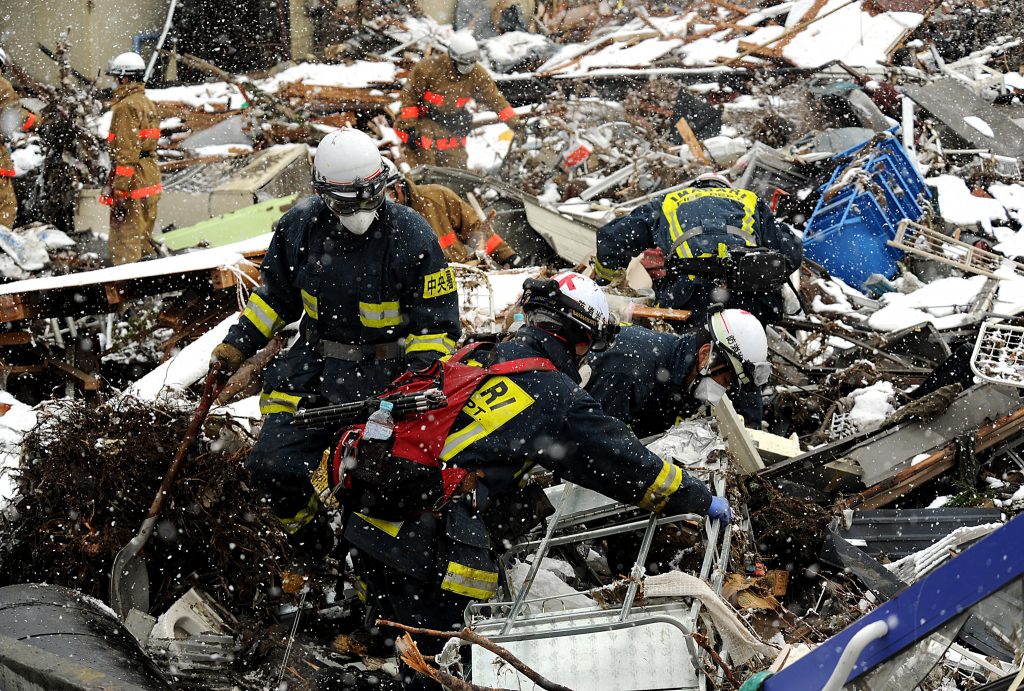
U.S. military personnel work alongside a Japanese search and rescue team to find survivors amid earthquake debris in Unosumai, Japan, March, 2011. (MSgt. Jeremy Lock/USAF)
In March 2011, northeastern Japan is devastated by a magnitude 9 earthquake and subsequent tsunami. In response, U.S. and Japanese military forces launch the largest bilateral mission in the history of the alliance, coordinating rescue operations and delivering essential supplies.
In July 2018, when western Japan suffers flooding and landslides triggered by heavy rainfall, the U.S. Agency for International Development’s (USAID) Office of U.S. Foreign Disaster Assistance provides emergency funds to help people affected by the disaster. USAID again supports humanitarian relief efforts in September 2018, when a magnitude 6.6 earthquake strikes Japan’s Hokkaido Island.
2021-2023

President Biden and Japanese Prime Minister Kishida Fumio walk along the Colonnade of the White House January 13. (© Mandel Ngan/AP)
In April 2021, President Biden welcomes Japan’s Prime Minister Suga Yoshihide and renews an alliance that has become a cornerstone of peace and security in the Indo-Pacific region and around the world.
In January 2023, President Biden welcomes Japanese Prime Minister Kishida Fumio to Washington (photo above), and the two reaffirm their commitment to bolster defenses against challenges in the Indo-Pacific region and elsewhere, to a U.S.-Japan space exploration Framework Agreement, and to improving their economies by building secure, resilient supply chains.
This story was previously published on May 24, 2019.
The original article is here on ShareAmerica.







COMMENTS0
LEAVE A COMMENT
TOP